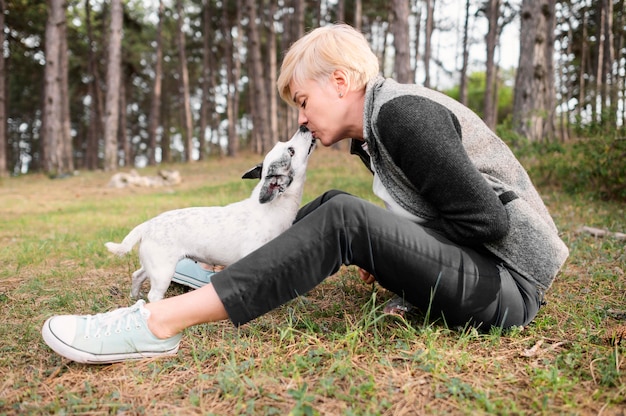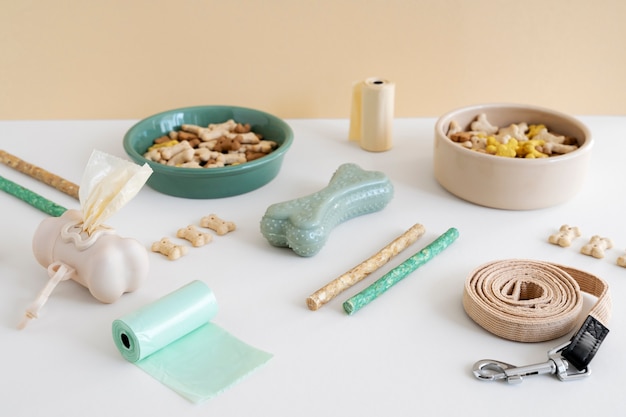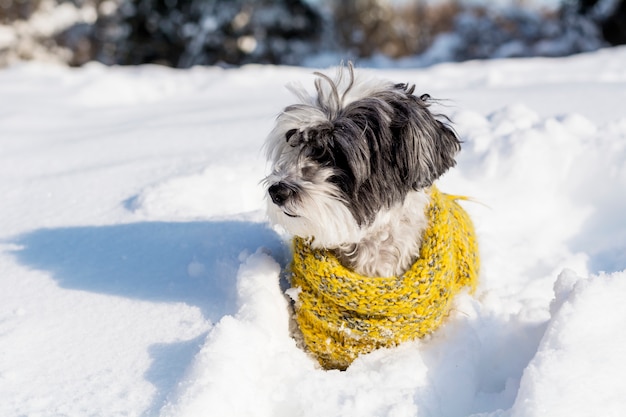Recognizing Signs of Joint Problems in Pets


Recognizing Signs of Joint Problems in Pets: A Guide for Northlake Pet Owners
Is your dog suddenly slow to get up in the morning, or has your cat stopped jumping onto their favorite windowsill? Joint problems in pets can sneak up quietly, often mistaken for simple aging or a lazy day. As pet owners in the Northlake area, noticing these subtle changes can make all the difference in your animal companion’s quality of life. At Canyon Falls Veterinary Hospital, we understand how much your pet means to your family, and our team of veterinarians is here to help you recognize the early signs of joint problems in pets. Prompt attention and expert veterinary care can help your pet stay comfortable and active for years to come.
In this blog, we’ll walk you through the most common symptoms of joint issues, the causes behind pet lameness, and what you can do to keep your furry friend moving with ease. We’ll also explain how our modern facility in Northlake, TX can support your pet’s joint health with comprehensive diagnostics and advanced treatment options. If you’ve been searching for quality pet diagnostics in Northlake or a vet near me who truly cares about preventive care, you’re in the right place.
Our focus on preventive care and early intervention means you and your pet get the very best in local veterinary services. Read on to discover how to spot joint problems early, what steps to take, and when to schedule an appointment with our veterinary professionals.
Signs of Joint Problems in Pets: What to Watch For
Joint issues can affect pets of all ages, breeds, and activity levels. The challenge is that dogs and cats are experts at hiding discomfort, often adapting their behavior to minimize pain. As a pet owner, your vigilance is key to catching problems before they worsen.
Key symptoms of joint problems in pets include limping or favoring one leg, stiffness after rest, and a noticeable reluctance to play, run, or jump. You might observe your dog hesitating before climbing stairs, or your cat choosing to nap on lower surfaces rather than leaping up to higher spots. Other potential signs are difficulty rising from lying down, slower movement overall, and changes in your pet’s gait such as a bunny-hopping motion or awkward steps.
In some cases, your pet might vocalize discomfort with whimpers, yelps, or increased irritability when touched near the affected joint. Swelling or heat in a joint, licking or chewing at the area, and decreased interest in walks or toys can all point to joint pain. If you notice these changes, especially if they persist for more than a day or two, it’s time to consider a wellness examination to rule out underlying problems.
If you reside in Northlake or surrounding communities, being aware of these symptoms can help you seek timely pet diagnostics near me and ensure your companion receives the support they need.
When Subtle Becomes Serious
It’s important to remember that some pets may only show mild symptoms at first. For example, a young, active dog may play normally but start to limp slightly after a long walk. Alternatively, a senior cat may simply slow down, and their reduced activity could easily be mistaken for normal aging. Consistent observation and knowledge of your pet’s usual habits make it easier to spot early signs of trouble.
By recognizing these warning signals, you can address issues before they escalate—potentially preventing more serious joint damage or loss of mobility.
Common Causes of Pet Lameness and Joint Problems
Understanding what leads to joint pain can help you protect your pet’s health. Pet lameness causes vary widely, and the source of discomfort may not always be obvious. Sometimes, a sudden limp is caused by an injury during play or a misstep on uneven ground. Other times, the onset is slow and related to underlying health conditions.
Osteoarthritis is the most frequent cause of chronic joint pain in both dogs and cats. This condition results from wear and tear of the cartilage that cushions the joints, often developing as pets age. Large breed dogs and overweight pets face higher risks, but arthritis can affect animals of any size or life stage.
In addition to arthritis, common contributors to joint issues include ligament injuries such as cranial cruciate ligament (CCL) tears in dogs, which are similar to ACL injuries in people. Patellar luxation, where the kneecap slips out of place, affects many small breeds and can also impact cats. Hip dysplasia, elbow dysplasia, and congenital defects are other orthopedic problems seen in pets.
Infections, immune-mediated diseases, and even tick-borne illnesses can sometimes cause joint inflammation and pain. Trauma from accidents or rough play may result in fractures or dislocations that affect joint stability. Certain surgical procedures or previous injuries can also predispose pets to future joint concerns.
If you have questions about pet lameness causes in Northlake, our team is ready to provide answers and guidance. Early diagnosis is crucial in determining the best treatment plan for your pet.
The Role of Diagnostics in Joint Health
Pinpointing the exact cause of joint pain often requires more than a physical exam. Advanced diagnostic tools such as digital radiology services and in-house laboratory testing allow us to assess joint structure, detect inflammation, and identify underlying conditions quickly and accurately. These resources ensure that pets in Northlake and surrounding communities have access to top-tier veterinary diagnostics in Northlake without the need for distant referrals.
Professional Treatment and Management of Joint Problems
Once a diagnosis is made, your pet’s treatment plan will be tailored to their specific needs. At Canyon Falls Veterinary Hospital, our comprehensive approach combines medical management, advanced diagnostics, and surgical expertise to deliver the best outcomes for your furry companion.
Treatment approaches involve several options, depending on the severity and cause of the joint problem. For mild cases or early arthritis, weight management, tailored exercise routines, and joint supplements can help maintain mobility and comfort. Pain management may include anti-inflammatory medications, as well as therapies designed to slow joint degeneration.
More advanced or acute cases may require surgical intervention. For example, pets with severe hip dysplasia or traumatic injuries may benefit from procedures such as FHO (Femoral Head Ostectomy) surgery or cruciate ligament repair. If your pet has a kneecap that frequently slips out of place, patellar luxation surgery can restore stability and reduce pain. In the most severe situations, amputation may be necessary to relieve chronic pain or address irreparable injury; our pet amputation service is performed with compassion and the goal of maximizing your pet’s quality of life.
Throughout every step, our veterinary team will guide you through the options, explaining risks, benefits, and expected outcomes. We prioritize your pet’s comfort and safety, using advanced surgical techniques and modern anesthesia protocols to promote a smooth recovery.
The Importance of Ongoing Care
Managing joint problems is rarely a one-time fix. Regular follow-up visits, rehabilitation recommendations, and adjustments to your pet’s treatment plan ensure lasting results. Our goal is to support your pet’s mobility and happiness for the long term, building a partnership with you to monitor progress and adapt as needed.
If you’re seeking a veterinarian near me who offers both preventive and advanced orthopedic care, our team is here to help from diagnosis through recovery.
Prevention and Home Care Tips for Joint Health
While not all joint problems can be prevented, there are steps you can take at home to minimize risks and support healthy movement. Weight management is one of the most effective strategies—keeping your pet at a healthy weight reduces stress on joints and lowers the risk of arthritis and injuries. Your veterinarian can recommend portion sizes and feeding routines tailored to your dog or cat’s unique needs.
Regular, moderate exercise helps maintain muscle strength and joint flexibility. Activities such as gentle walks, swimming, or interactive play sessions are excellent ways to keep your pet active without over-straining their joints. For cats, providing ramps or steps to favorite perches can encourage movement while reducing the need for high jumps.
Joint supplements containing glucosamine, chondroitin, or omega-3 fatty acids may be recommended for pets at risk of arthritis or those with early joint changes. Your veterinarian will guide you in selecting products that are safe and effective.
Monitoring your pet’s environment is also important. Slick floors, steep stairs, and high furniture can all pose challenges for pets with joint discomfort. Adding rugs, ramps, or non-slip mats can make a big difference in daily comfort and mobility.
Regular checkups, including routine wellness examinations, allow early detection of joint changes before they cause significant pain or disability. By staying proactive, you can help your pet enjoy an active, comfortable life.
When to Seek Veterinary Care for Joint Issues
It can be difficult to know when a limp or stiffness is serious enough to warrant a trip to the vet. As a general guideline, any persistent lameness, pain, or change in mobility should be evaluated by a veterinary professional. If your pet refuses to bear weight on a limb, cries out in pain, or shows swelling and heat in a joint, immediate attention is needed.
Other warning signs to watch for are sudden reluctance to move, inability to get up, noticeable changes in appetite, or behavioral changes such as aggression or withdrawal. These can all indicate significant discomfort or underlying illness.
For pet owners in Northlake and surrounding communities, timely evaluation by a skilled veterinary team can make all the difference. Our modern diagnostic capabilities and orthopedic expertise mean your pet receives a thorough assessment and a customized treatment plan. If you’ve been searching for veterinary services near me or the best vet team near me, Canyon Falls Veterinary Hospital is committed to serving your needs with compassion and excellence.
Remember, early intervention often leads to better outcomes, less pain, and reduced risk of long-term joint damage. When in doubt, reach out to your local veterinarian for guidance.
Supporting Your Pet’s Mobility: Schedule an Appointment Today
Recognizing the signs of joint problems in pets is the first step in protecting their comfort and quality of life. Whether your pet is showing subtle stiffness or struggling with obvious lameness, our veterinary team at Canyon Falls Veterinary Hospital is here to help. From comprehensive pet diagnostics in Northlake to advanced surgical care, we offer the expertise and compassion you and your pet deserve.
If you notice changes in your pet’s mobility or suspect joint pain, don’t wait. Schedule an appointment with our caring team in Northlake, TX. We serve Northlake and surrounding communities, providing the quality veterinary services near me that local families trust.
To learn more or book a consultation, call (972) 559-9500 or visit our website. Your pet’s comfort, happiness, and mobility are our top priorities. Let us help your companion enjoy an active, pain-free life—because every pet deserves the best care from a vet near me who truly cares.
The information in this blog is intended for educational purposes only and should not replace professional veterinary advice. Always consult your veterinarian if you have concerns about your pet’s health or notice changes in their mobility.





















